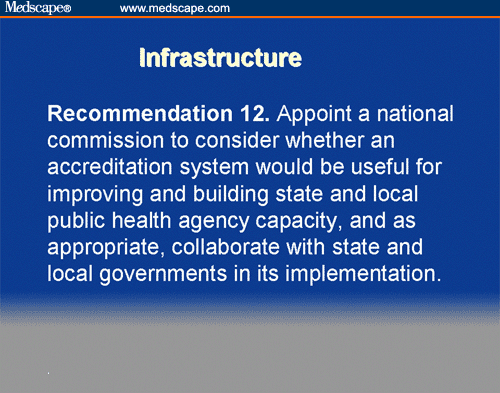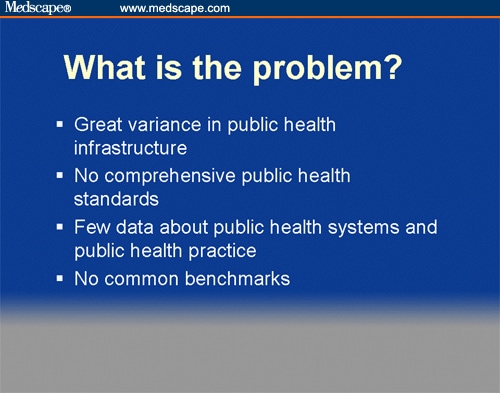Putting the PI in QAPI: Performance Improvement in Home Health
Table of Content
This should include initiation of the PIP, planning, implementation, monitoring, and closing. Have changed over time based on the results of ongoing monitoring analyses, technical expert panel input, and stakeholder feedback.

MedBridge allows agencies to easily implement a patient-centric care model that improves quality of care. Once you have identified areas that require improvement, use this performance improvement project prioritization worksheet to identify potential areas for PIPs. The worksheet considers factors such as high-risk, high-volume, or problem-prone areas that affect health outcomes and quality of care. Potentially avoidable events serve as markers for potential problems in care because of their negative nature and relatively low frequency. The potentially avoidable events reported are outcome measures, in the sense that they represent a change in health status between start or resumption of care and discharge or transfer to inpatient facility. All the potentially avoidable event measures are adjusted for variation in patient characteristics.
Journal Logo
Having a Quality Assurance and Performance Improvement program is mandated by the new Home Health Conditions of Participation . While home health agencies should already have their QAPI programs up and running, you have until July 13, 2018 to implement and document at least one performance improvement project to ensure compliance with the CoPs. CMS usually updates the HH QRP claims-based measure results every year. However, due to the COVID-19 Public Health Emergency HHQRP data submission requirements for the Q4 2019, Q1 2020, and Q quarters were exempted. The missing data for Q and Q will impact what is displayed on Care Compare; therefore, public reporting of home health agencies' data will freeze after the October 2020 refresh.
How you do so will have already been laid out in your project charter. This page contains brief descriptions of each measure type and how the data for that measure is calculated. TheDownloadssection below provides links to technical documentation, tables identifying which Home Health Quality Measures are risk-adjusted and reported publicly, and additional resources. Leads, develops quality projects, activities to ensure survey, compliancereadiness at all times. A qualitative exploration of a patient-centered coaching intervention to improve care transitions in chronically ill older adults.
The Role of HHAs in Preventing Rehospitalizations
Each HHA gets provider preview reports showing the Patient Survey star ratings about one month before the ratings are posted on Care Compare. Agencies have several weeks to review and send us proof that there's been a calculation error to ask us to review their rating. All Medicare-certified HHAs may potentially receive a Quality of Patient Care Star Rating.

Medication reconciliation is a requirement of the home care admission visit, in order to respond to the often-conflicting information between the medication list accompanying the patient home from the hospital or physician's office and what the patient reports they actually take at home. This information is also required to enable completion of the OASIS-C document. Coleman identified the need to focus on coaching or motivational interviewing to assist patients and their care partners in becoming more able to "self-manage" their chronic illnesses (Coleman et al., 2006).
About CMS
Review and apply key points and resources for PIP development and documentation. Tools for the patient may include paper or electronic forms depending on the preference of the patient. In addition, appropriate supports to assure medication compliance such as pillboxes, prepackaged medications, and/or reminder systems may be needed. Of primary importance is assessing the patient's ability and/or willingness to comply with the medication regimen . You’ll also want to evaluate your OASIS accuracy, as documentation errors can inadvertently leave your agency without credit for having initiated care within the proper window. Ensuring accuracy around the entry of OASIS items such as M0104 can make an immediate impact on timely initiation scores.
Home Health Quality Assessment & Performance Improvement’s five standards include the development of a Performance Improvement Project . Communication tools for the patient and clinician are listed in Table 5. The clinician must have current information regarding the patient's various physicians. Policies for formalizing communication lines between clinician, patient, and PCP/specialists are critical. As more medical practices implement email as a communication tool, the ability to have rapid information exchange is possible.
Measures based on OASIS data are calculated using a completed episode of care that begins with admission to a home health agency and ends with discharge, transfer to inpatient facility or, in some cases, death. HHCAHPS scores based on fewer than 40 completed surveys do not have sufficient statistical reliability to ensure that those scores measure true performance and not noise in the data for reporting star ratings. More details about the methods for calculating Patient Survey star ratings can be found on theHHCAHPS surveywebsite. QA is the specification of standards for quality of service and outcomes, and a process throughout the organization for assuring that care is maintained at acceptable levels in relation to those standards. QA is on-going, both anticipatory and retrospective in its efforts to identify how the organization is performing, including where and why facility performance is at risk or has failed to meet standards. There was a cultural shift within the agency as staff and patients alike were empowered to prevent rehospitalization with the provision of the various tools and planned interventions.

Develop rapid-cycle testing of changes before spreading within organization to validate improvement. This course builds upon the principles from the Home Health QAPI - Part 1 course. The focus of Part 2 is to provide guidance and strategies around the final QAPI standard, Performance Improvement Project . An interdisciplinary PIP team will be selected to brainstorm on potential evidence-based interventions to address the specific problem or improvement area identified from agency data. Testing, spreading, and sustainment of the PIP interventions is critical to the success of the project. In addition to learning key principles and strategies in this course, there will be a demonstration of a PIP team in action.
Providing tips to the family on preferable times to contact the PCP (avoid lunch time, after 4 PM, or Monday mornings, as these are high-volume call times). Because there is often a delay in the PCP receiving hospital discharge information, faxing critical information to the PCP may also facilitate more timely communication of patient condition. In addition, a helpful document to assist in identifying the medication reconciliation process is the Medication Reconciliation Tool (Coleman et al., 2005) to identify common medication discrepancies and how they are resolved . A revision of the forms was conducted after approximately 18 months of usage based on comments by clinicians and patients. These included a greater emphasis on goal setting, additional specific records to provide data to PCP, and the addition of a Fall Prevention Teaching Guide.

Discuss the impact of the interventions over time, utilizing charts and graphs for easy understanding. Have each member of the team sign off on the project charter, indicating their understanding of the purpose and approach to the project. Identify who will provide overall direction and oversee financing for the project, who will coordinate the activities of the project team, and who will manage the day-to-day project operations. Your goals should be clearly stated, describing what your agency or QAPI team intends to accomplish. Be brief and specific, describing when and how often the problem occurs, and what the impact is on your patients and your agency when it occurs. For a list of the potentially avoidable event measures, please refer to the Home Health PAE Measures Table, which can be located via the link to the Home Health Measures Tables in theDownloadssection below.
The literature was reviewed and several trends were found to be instrumental in preventing unnecessary rehospitalization. These include care transitions, chronic disease management, and coaching. Patient satisfaction is driven by the patient experience and how patients and caregivers perceive the delivered care. To measure patient satisfaction at a particular agency, payers look at results from the HHCAHPS survey, including NPS® scores, which rate how likely patients are to recommend the agency to someone else.
HH QRP measures derive from three data sources, Outcome and Assessment Information Set assessment, Medicare fee-for-service claims, and the Consumer Assessment of Healthcare Providers and Systems (CAHPS®) Home Health Care Survey. OASIS and HH CAHPS data collection and reporting are requirements for providers participating in the HH QRP. Medicare FFS claims data are submitted by HHAs to receive payment for services provided for Medicare FFS patients. Identifies, collaborativelyplans, implements and evaluates agency quality assurance/quality improvement/process improvement programs, focused on attainment of top decile outcomes, patient satisfaction andstrategic aims. Quality measures assess patient improvement over time, from the point at which the clinician initially enters the home to the point of discharge.
You should review all aspects of your agency, including clinical care processes, non-clinical processes, and regulatory requirements. While reviewing these areas, pay close attention to topics that are meaningful and address the needs of both patients and staff. Creating a tool kit for clinicians and patients began with an introduction to the staff of the Coleman Care Transitions InterventionSM. We then examined each "pillar" and identified what would be needed for clinicians and patients to utilize these pillars . The contents of the initial PHR utilized in the quality improvement project described in this article were then expanded to include examination of additional tools listed in the "tool kit" below. The additional tools are available to clinicians for patients as they deem appropriate. Care transitions are defined by the American Geriatrics Society as "a set of actions designed to ensure the coordination and continuity of healthcare as patients transfer between different locations or different levels of care within the same location" (Coleman & Boult, 2003, p. 556).

Comments
Post a Comment